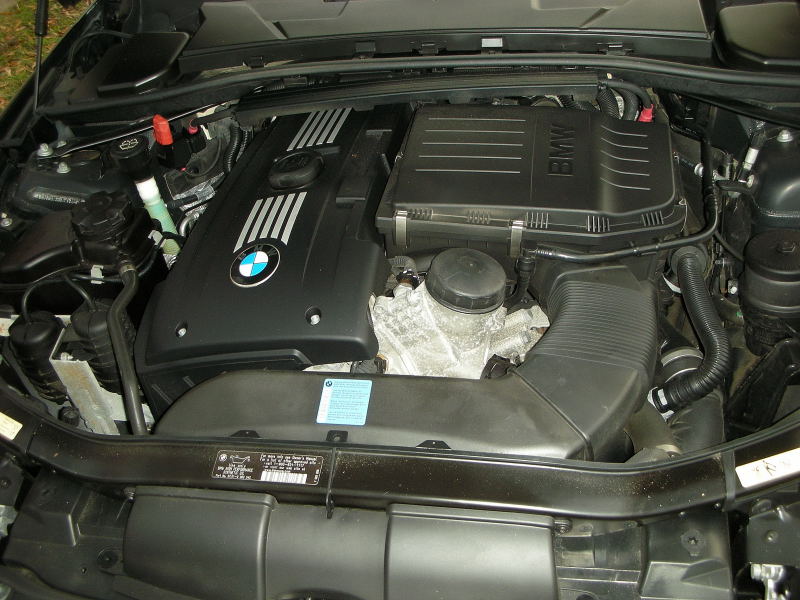It’s past time for another wheel post, but (thankfully) neither the M3 or the 530 have given me much to write about lately. So I called up my good friend Rich this weekend to meet up and take a look at the black 2007 335i he purchased back in May with about 40,000 miles and with a Certified Pre-Owned (CPO) warranty. When he bought I suggested Rich not to spend extra for the BMW regular maintenance program, since BMW doesn’t do nearly as much maintenance now that they cover it, compared to the old days. Smart of Rich to buy CPO — new ones can push $50K with some nice options.
Mike Miller, Tech Q&A guy from Bimmer Magazine, sent me his “Old School” maintenance list a while back. If anyone would like a copy, just drop me a comment.
To use some BMW speak, the E90 body style seems to have been a hit with the public. That’s the nomenclature for the newest style of BMW 3 series cars, the the 3 series is the backbone of BMW sales in North America. BMW has been hit by the recession just like every business outside of bankruptcy lawyers, but not too dramatically. Sales of the 3 series in North America through October have totaled 75,459, compared to an October 2008 total of 97,329. They don’t break down sales by individual styles, or at least I don’t know where those numbers would be. Roughly 22% down — not that bad compared to some other auto makers.
Every BMW style car has a number. Recently BMW managed to make things more complicated by giving every body style a unique number. In the past, one style number was enough — for example, my M3 is an E36, as is every other 3 series of that vintage, coupe, sedan or convertible. Why did BMW change? Maybe the Germans just wanted it to be tougher to know the lingo.
So to be precise, I got to drive Rich’s E92 (for coupe) 335i today. It’s not hard to see why this car has been a hit. It’s a beautiful car, and it’s engine is a modern marvel. 2007 was the first year of the BMW N54 engine, an efficient 6 cylinder with two small turbochargers that puts out 300 horsepower while still getting 26 mpg highway. This engine now powers multiple BMW models — the 135, 335, 535, X6 and Z4.
Usually with turbos you feel the power boost hit at certain RPMs, but the power delivery from the N54 is very smooth. The car felt very luxurious, with a lot of options. There was a large display in the dash that showed the radio settings and GPS, and probably could be set for other stuff too using iDrive, sort of a computer operating system in newer BMW cars. Rich says it’s not intuitive and can be frustrating until you get the hang of it.
The car had an automatic transmission but you can switch to auto-manual and use paddles on the steering wheel. That sounded more fun than it was, I had some trouble getting used to the paddles but the auto gear changes were pretty smooth. Rich’s car has the sport suspension, and the it rode well but to me felt like a larger car. Maybe because my 530 also has a sports suspension, it felt to me like that car, not my M3.
The 335i is a beautiful and powerful car. The only thing I’d note was that I felt a little isolated from the road, the car was so smooth in ride and acceleration. Again it could be because I’m used to my M3, which Rich drove and agreed communicated the road very well to the driver. Later this year BMW is supposed to bring out a 2010 model with a diesel version of the N54, with even better mileage numbers. That could really be a market changer.
I still love my two BMWs, but I do envy the horsepower a bit. And, since BMW is very conservative with the boost they use for their turbos in stock format, an extra 40-50 HP is easy to achieve with some after-market software from several reputable vendors. Of course it doesn’t make that much sense living in an urban area, but I’d probably get it!


Could you send me a copy of that maintenance list you mentioned? I would love to get a copy of that or Mike Miller’s email to contact him for a list.
Sue — thanks for dropping a comment, and you bet. Sending to you via email.
Chris